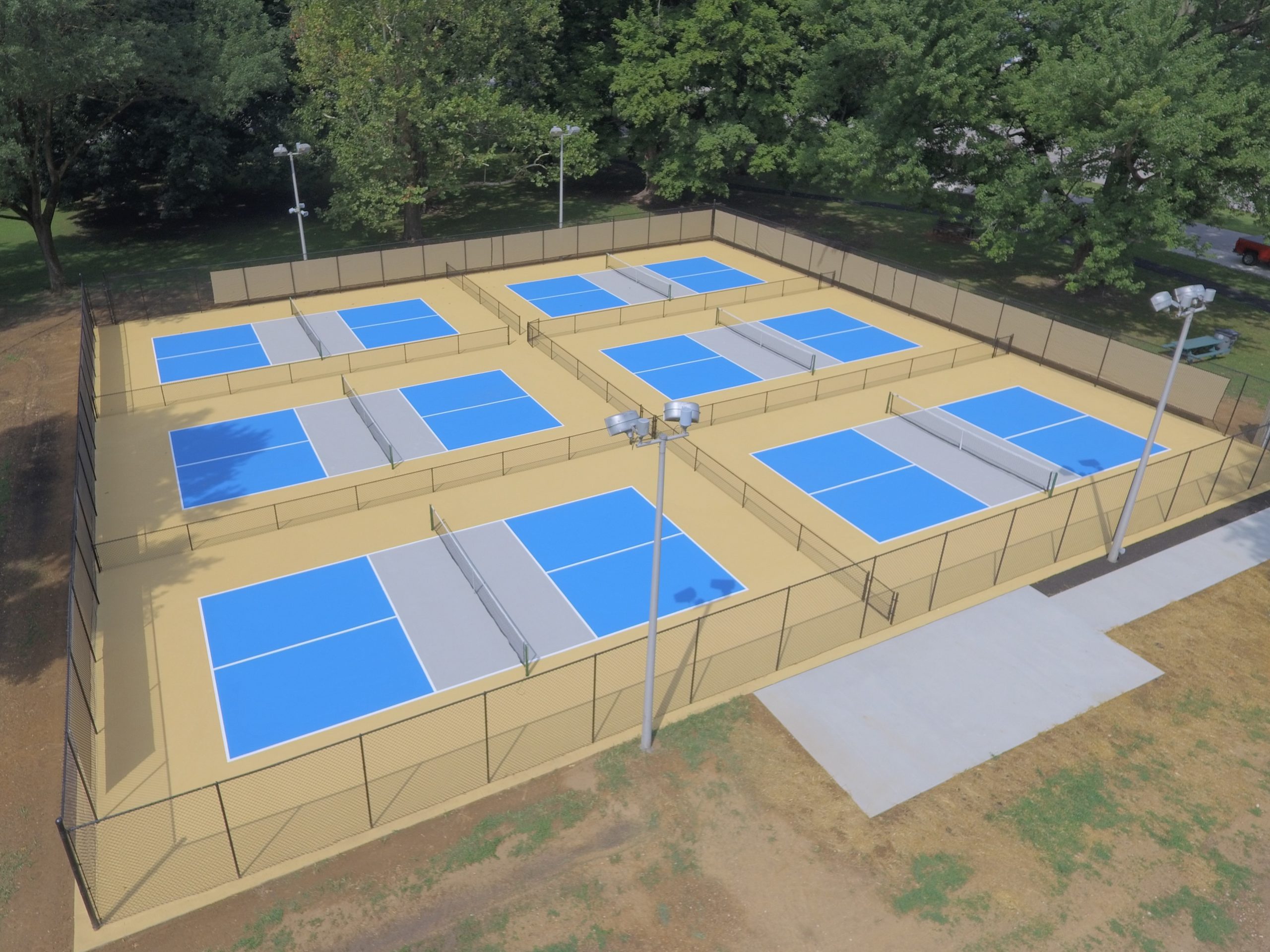Transform Your Area with Top Quality Pickleball Courts Style & Building And Construction in Illinois and Midwest
Trick Consider the Building And Construction of Pickleball Judiciaries: From Site Selection to Last Surfaces
The building of pickleball courts incorporates an array of vital elements, beginning with the option of an ideal website that balances ease of access with ecological considerations. Essential aspects such as court measurements, surface products, and drain systems considerably influence not just the top quality of play however additionally the durability of the center.
Website Selection Criteria
When getting started on the building of pickleball courts, it is important to toenail down the site option criteria that will make certain ideal playability and availability. The place should be conveniently obtainable for gamers, preferably positioned near houses or area facilities, to motivate engagement.
Furthermore, the terrain must be level and stable, as uneven ground can result in security risks and impact gameplay. Appropriate drain is additionally essential; picking a site with great water runoff will certainly assist maintain court problems throughout adverse weather condition.
An additional important factor to consider is the availability of utilities. Access to electrical energy and water is needed for illumination and maintenance functions. Furthermore, proximity to auto parking facilities is vital, assisting in very easy gain access to for gamers and viewers alike.
Ecological variables can not be neglected; all-natural color from trees can enhance gamer comfort, while exposure to dominating winds may disrupt play. Last but not least, zoning laws and neighborhood assistance ought to be considered to ensure that the task lines up with neighborhood standards and obtains the backing it needs for successful application. By carefully assessing these requirements, stakeholders can produce a welcoming and practical setting for pickleball lovers.
Court Capacities and Design
To make sure optimal gameplay and adherence to regulations, the measurements and format of pickleball courts have to be carefully defined. A conventional pickleball court determines 20 feet in width and 44 feet in length for both singles and increases play. The advised format consists of a non-volley area, generally described as the "kitchen," prolonging 7 feet from the internet on either side. This area is essential, as it affects player positioning and shot choice - Illinois and midwest.
The internet elevation is evaluated 36 inches at the sidelines and 34 inches at the facility, developing a minor dip that impacts ball trajectory. Court markings are similarly essential; lines must be 2 inches wide and distinct in color to ensure visibility.
In addition, a barrier zone surrounding the court is suggested, generally expanding 5 to 10 feet beyond the sidelines and baselines to fit gamers' activities and boost safety. Correct design and dimensions not just make certain conformity with main laws but likewise boost the general playing experience, accommodating both entertainment and affordable play. Cautious planning in these areas is extremely important to the successful building of pickleball courts.
Surface Area Material Options
Picking the ideal surface area material for pickleball courts is important for guaranteeing optimal player efficiency and safety. The selection of surface can significantly affect gameplay, including sphere bounce, traction, and gamer comfort.
There are a number of alternatives offered, each with its distinctive characteristics. Asphalt is a prominent choice because of its toughness and low maintenance demands. It gives a strong playing surface area that can stand up to various weather conditions yet may require periodic resurfacing.
Concrete is an additional commonly made use of product, providing exceptional long life and a smooth finish. It permits for regular ball bounce yet can be hard on gamers' joints, making it less desirable for long-term play without correct padding.
For those looking for boosted convenience and shock absorption, supported acrylic surface areas present a feasible alternative. These surface areas integrate a base layer with an acrylic topcoat, giving boosted traction and a softer feel, which is beneficial for reducing the danger of injuries.
Lastly, synthetic turf is gaining grip, particularly for multi-purpose facilities. Its versatility and lower maintenance requires make it an eye-catching alternative, though it may not offer the same round action as conventional tough courts. Careful factor to consider of these options will make certain an optimal having fun atmosphere.
Drainage and Illumination Factors To Consider
Proper drain and efficient lights are necessary parts in the building and construction of pickleball courts, significantly affecting both playability and safety. Appropriate water drainage systems prevent water buildup, which can lead to unsafe surface areas and damages to the court structure.
Illumination is equally vital, particularly for courts image source planned for night use. Correct illumination enhances presence, making sure that players can see the round plainly and reducing the danger of crashes. The positioning of illumination fixtures must be tactically planned to remove shadows and supply even distribution of light across the court. LED lights are advised for their energy efficiency and longevity, offering intense lighting while lowering operational costs.

Final Surfaces and Maintenance
After addressing drainage and lighting factors to consider, attention transforms to the last finishes and continuous upkeep of pickleball courts. Illinois and midwest. The option of surface product is critical, as it impacts both playability and toughness. Usual alternatives consist of acrylic finishes and specialized sporting activities surface areas that supply optimum grip address and padding. These surfaces ought to be applied in multiple layers to make certain durability versus climate elements and put on.

Seasonal maintenance may include resurfacing every few years, depending upon usage and ecological elements. Appropriately maintaining nets, court lines, and surrounding areas is just as vital to provide a safe and pleasurable playing experience. By buying quality finishes and sticking to an organized upkeep routine, center owners can ensure their pickleball courts stay in exceptional condition for years ahead.
Conclusion
In final thought, the effective building and click reference construction of pickleball courts pivots on precise interest to several crucial variables. High quality finishes and a robust maintenance schedule are vital for maintaining the court's condition, enhancing the overall experience for players and spectators alike.